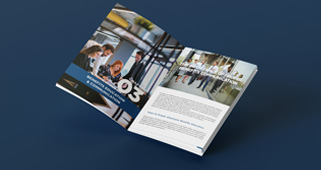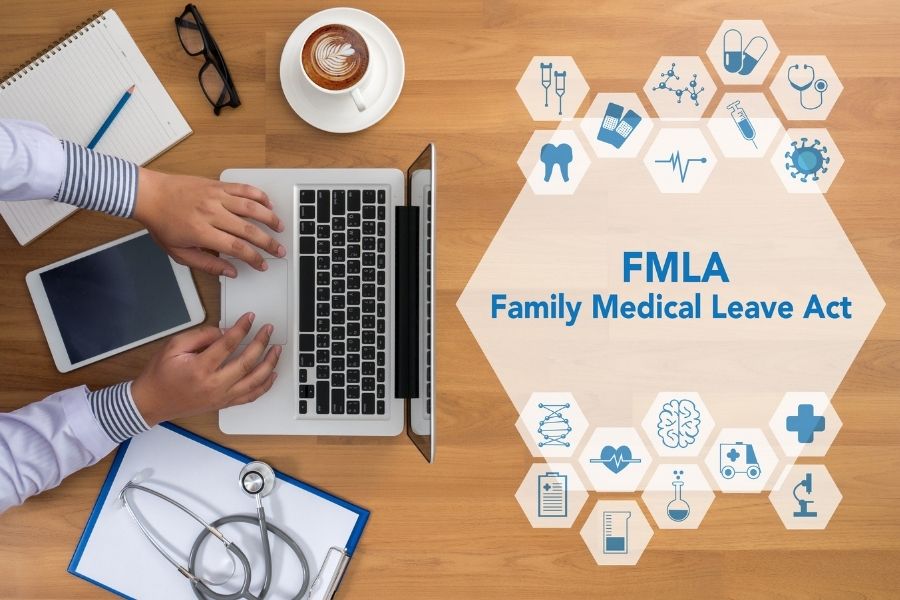If you’re considering the differences between short-term disability and the Family and Medical Leave Act (FMLA), you’re a part of the kind of organization that genuinely cares about doing the right thing for your employees. While both of these benefits step in to help employees in times of illness or injury, there are many fundamental differences between the two. Read on for the basics of what short-term disability is, what the FMLA is, and what the programs’ key differences mean for your team members.
What is Short Term Disability?
Employers can elect to offer short-term disability insurance to their employees. If they do so, employees can receive a portion of their income through disability insurance while they are unable to work due to a qualifying illness or injury. Think of short-term disability insurance as “paycheck insurance.” Keep in mind, though, that disability insurance doesn’t cover instances where employees are simply out sick, i.e., they miss a few days of work due to a cold or flu.
Short-term disability covers illnesses and injuries that prevent employees from working for an extended amount of time. These insurance policies, depending on coverage, can provide 40% to 60% of an employee’s income for a period of three months, six months, or even up to a year. In addition to illness and injury, the policy you select can even cover recovery time following pregnancy or rehabilitation after surgery. When one of these “qualifying events” happens, an employee with disability insurance simply files a claim with the insurance company to receive the predetermined portion of their paycheck.
What is FMLA?
FMLA, or the Family and Medical Leave Act, is a piece of federal legislation requiring certain employers to provide twelve weeks (three months) of protected leave each year. Employers don’t have to continue to pay wages or salaries to employees for missed time, but they do have to continue to offer the same health benefits an employee would normally receive. Employers who have 50 or more employees within the same 75-mile radius are bound to this federal legislation. The FMLA applies in all 50 states.
As its name implies, the FMLA covers employee leave for family or medical reasons. These reasons include maternity and paternity leave (including both birth and adoption), the care of an immediate family member with a serious health condition, and personal medical reasons, such as a severe health condition of the employee.
To qualify for FMLA protection, the employee must have worked for the company for at least 12 months and 1,250 hours. The FMLA guarantees that when the employee comes back to work after 12 weeks, they’ll come back to the same (or an equivalent) job, with the same pay and benefits. The FMLA also shields employees from being fired, being passed over for a promotion, or being subject to any other kind of discipline at work because of taking their federally protected leave.
What’s the Difference between Short Term Disability and FMLA?
As you’ve likely been able to tell so far, though the FMLA and short-term disability insurance share similar purposes, they are completely different animals. Most importantly for employers, compliance with the FMLA is mandatory (if you have at least 50 employees, that is), while short-term disability is an optional benefit you can elect to provide to your employees. And while short-term disability covers a portion of employees’ paychecks, the FMLA does not; it just requires businesses to keep employees’ pay level steady when they return from leave.
Can I offer Short Term Disability and FMLA Benefits to my Employees?
Yes! Even if you have fewer than fifty employees, you can adhere to the FMLA as a courtesy to your employees. You can offer short-term disability insurance as well, and help employees take care of their financial responsibilities during an already stressful time in their lives. You’ll benefit as an organization by providing disability insurance to your employees – not only will you be able to recruit and retain the best talent, you’ll also reap tax benefits if you pay for the coverage as a company.
If you’re considering what the best leave policies, benefits, and insurance coverage look like for your company, it always helps to talk through your options with experts in human resources for small businesses. Benely is here to help. Contact Benely for assistance in finding the perfect coverage for your employees.






